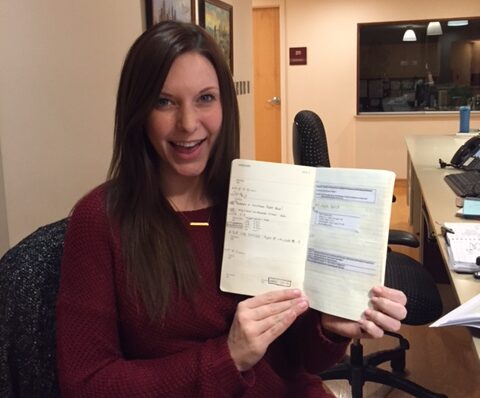At the beginning of each semester, we often formally or informally tell ourselves that we are going to be better about our time management. Perhaps it’s the looming reminder of the stress we endured when juggling multiple assignments at the end of the semester, or it’s the commitment to striking a better work-life balance. Whatever the motivations behind our desires to be better organized one of the first topics that come to mind are calendars and perhaps more specifically planners.
There are many, many, many planners out there. Rather than orient you to a particular market I’ll give you some things to look out for, and an example of what a well-used planner may look like.
Purpose—Before beginning a search for a planner think of the purpose for which you will need it: to keep track of meetings, completed assignments, study schedules, to-do lists, quick note-taking. Identifying your purpose will prioritize the features you’ll find most useful. For example, if your goal is to use the planner as a central location for which to keep your work, study, and assignment schedules then having a planner with sufficient space and perhaps even an extra weekly page will be important.
Layout–Planner layouts are a deal breaker for many. A quick search for planner layouts returns more templates than could be used by one individual. They range from frilly and decorated layouts with coding stickers to plain and simple. While we do not discourage the use of colorful planners–who doesn’t need a little color in their life?–we do warn you from purchasing something that although beautiful may not be functional for your purposes.
Timeline--As an undergrad, I kept an academic planner (usually August-July). As a result, I can tell you what I was up to on any given day in the past many(ish) years, as it pertains to school work. That worked well for me but I remember wishing I had a year-long planner during the school breaks. As a graduate student, a January-December calendar makes a lot more sense for me as my summers and breaks tend to be busier than before. If you’re looking to make a similar shift, this is the perfect time as you won’t lose out on multiple months in your planner.
Durability–Most planners are made to be sturdy so this is more of a reminder. If you’re planning on using your planner year-round read planner reviews and keep an eye out for the materials. In my experience, bounded, thick cardboard covers and thin leather covers work best.
Size—Along with thinking of purpose, think of size. Will a small pocket planner work for you? If you plan on using it as a to-do list organizer then perhaps this is a good option. Consider how and when you will carry your planner with you: backpack on campus, purse to a coffee shop, for example.

With that being said, here is an example from our very own Jen at Weingarten. During her search, Jen stated the availability of sizes was a challenge: she wanted a bigger planner but even reliable online sources were back ordered on the layout she had decided on. Jen, however, prioritized the layout of the planner she found indicating that “the extra page was key” for her, and went with a smaller planner. Here is an example of how she uses the space inside:
Happy organizing!
Staff Writer: Erica Saldívar García

